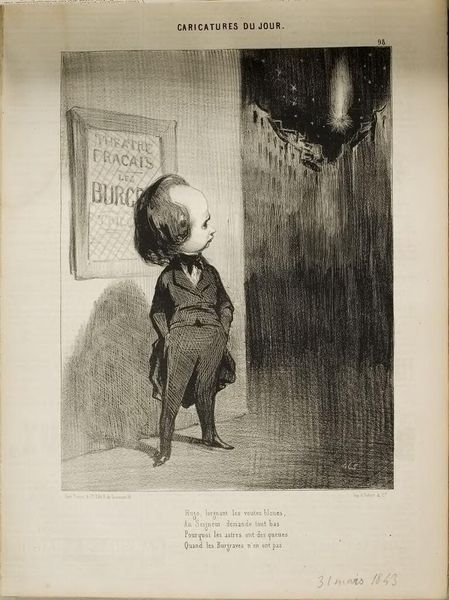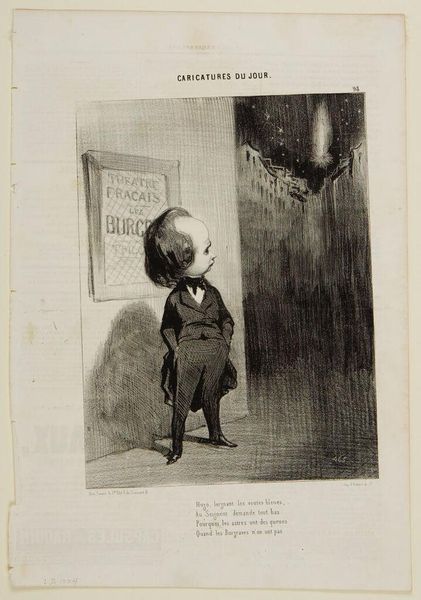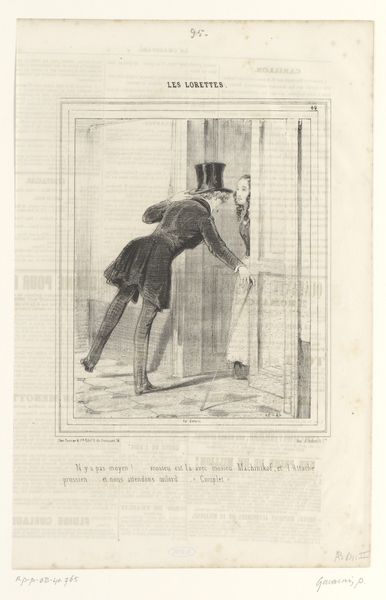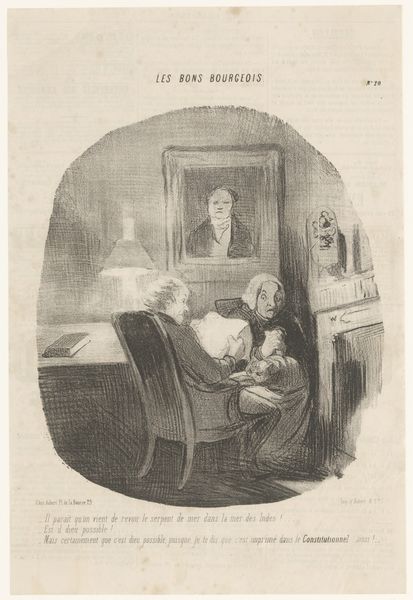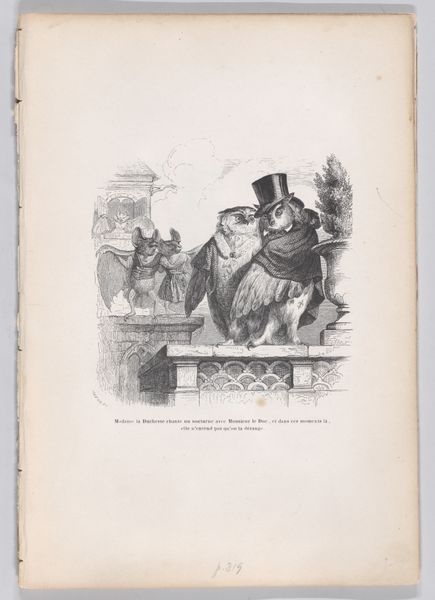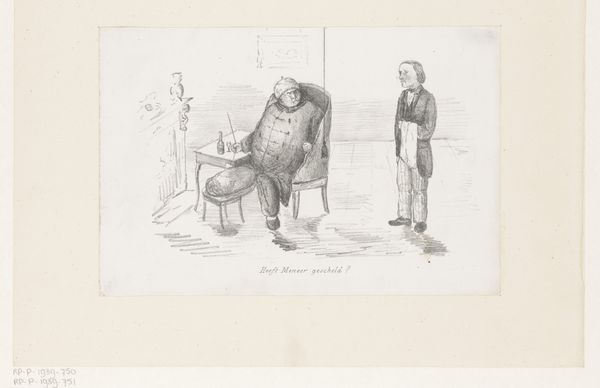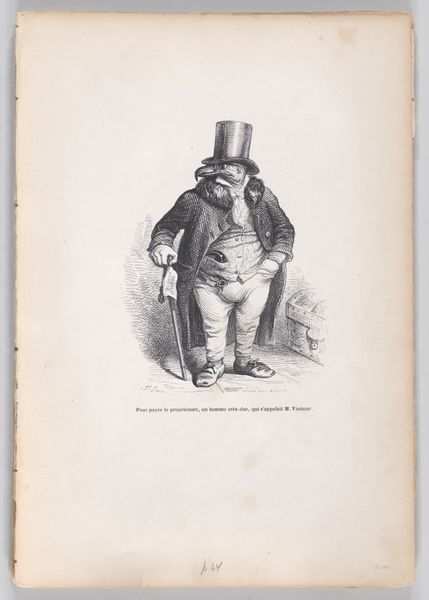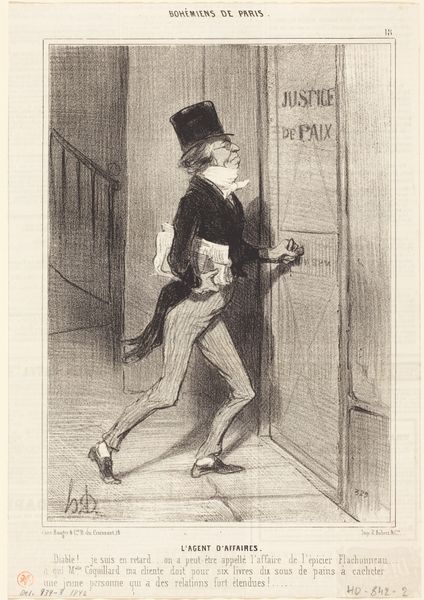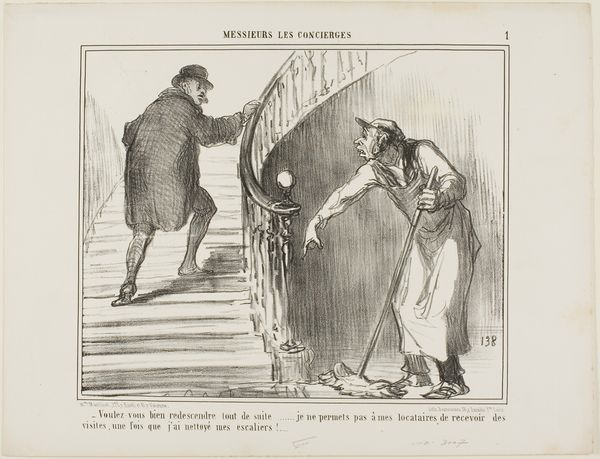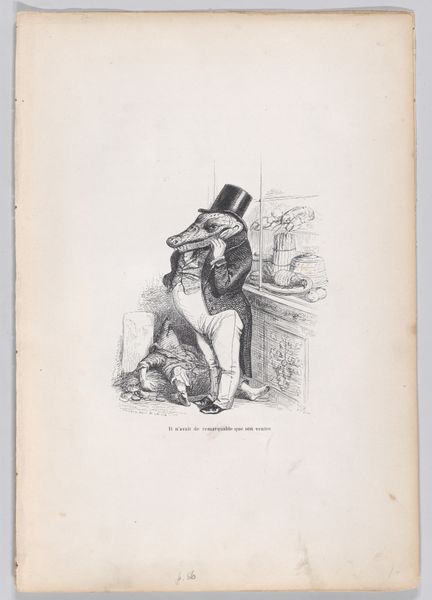
lithograph, print
#
portrait
#
lithograph
# print
#
caricature
#
figuration
#
romanticism
#
genre-painting
Dimensions: height 362 mm, width 243 mm
Copyright: Rijks Museum: Open Domain
This is Honoré Daumier’s lithograph, 'Karikatuur van Victor Hugo,' created in the 19th century. Lithography is a printmaking process that relies on the contrast between oily and water-receptive surfaces. The artist would have drawn with a greasy crayon onto a flat slab of limestone, treating the stone so that ink adheres only to the drawn areas. Then, a sheet of paper is pressed to the stone to create the print. Daumier’s skill in this medium allowed him to capture a striking likeness of Victor Hugo. Note the sharp contrasts, the soft gradations of tone, and the expressive lines defining Hugo’s features and clothing. The lithographic process, with its capacity for mass production, made Daumier’s satirical commentary accessible to a broad audience, reflecting the growing importance of print media in shaping public opinion and challenging social norms. Considering the material and process helps us understand how Daumier used lithography as a tool for social critique.
Comments
No comments
Be the first to comment and join the conversation on the ultimate creative platform.
